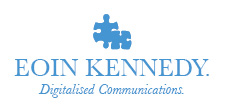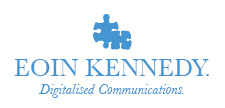Some tips for SME product launching
I was asked to give some tips for an article in the Sunday Times SME section on how to launch a product to maximum effect. Naturally my contribution was only a small part of the article but I thought some of the other bits I contributed might be of interest. It is fairly much top of mind so not a comprehensive list by any means.
1. Traditional Media – Press release
The first step is to build up a list of the appropriate media that cover your area of expertise or product. This should include the media publications but also the specific journalists that have covered the topic in the past. Searching in the publications website or using the news search function in a search engine will give a good starting point. From this build the email and contact list that you will send the release and other information through to.
The key to getting a story covered in national media is to have a strong interesting story. Think about what your product or story from a reader point of view rather than your own. How does it fit in with other things that are being covered in the media and research a strong hook. This could be anything from a record breaking attempt to a stunt based hook but needs to add to the relevancy of the product.
- Take time to script a press release detailing all the key facts and details.
- Make sure the essence of the story is clear in the opening paragraph and keep the release short and snappy avoiding cliché, superlatives or hyperbole.
- Media moments can be very short with a 5-10 second piece on radio deemed enough to tell your story so brevity is essential especially for broadcast media.
- Utilise any interest facts or figures to support why the product is interesting. This will also help journalists who would otherwise have to do this research.
- Only use quotes if they add to the strength of the release.
Once you are ready to issue the release you need to decide if its strong enough to send to numerous different publications or to give to one as an exclusive. Currently there are many freelance journalists who supply copy to a range of publications and this might be a better route depending on the interest level in the story. If you have a list of media you are sending the release to, try to include personal notes rather than blind cc (bcc) people on email. Only call the journalist if you have something else valuable to add to the release.
Make sure you are ready to respond to any queries quickly as the media move extremely fast. This includes having someone available to do radio or television interviews. Do all the preparation for this in advance by drawing up all the questions you think you will be asked and jotting down answers to them. Record yourself and get someone else to interview you – ideally using a video recorder.
All media outlets are busy places and journalists time is limited. Unless your product is truly ground breaking or innovative avoid press conferences as you may be faced with a costly empty room. Media will only attend if there is something else or true value that they could only get by attending rather than from the release.
Some things to avoid are contact journalist close to the publication time. Get you story in early and don’t expect a positive response from a Sunday paper journalist on a Friday afternoon or a broadcast news journalist just before an hourly bulletin.
2. Traditional Media – photography
Quite often a photo (with a well worded caption) can tell the story as effectively as a news article. In addition space in newspapers is limited for articles but visually arresting images work if they tell the story in a visually arresting way telling what they product or service will do.
Some hints
- Use a professional photographer who will take the photos, caption them and send to the correct people in the media.
- Use props to help tell the story.
- Avoid use of people in suits only shots.
- Use children and models if appropriate.
- Think of the backdrop and location – blank office wall is rarely attractive – think outside locations.
- Avoid overly branded photos such as logos.
- Make sure the photo is of sufficient size/quality for the newspaper.
Famous people or celebrities are always attractive to the media. You might know someone through personal contacts who will help you. Be careful here as the celebrity might become the story rather than you product or service.
3. Think Social Media.
Facebook, Twitter, Blogs and a variety of other social media tools can be used to help promote the message especially after you have taken the time to distil it all down into a press release. In addition they facilitate multimedia content (video, audio) that print media cannot handle.
Post the release on some of the well trafficked news sites such as IrishPressReleases.com.
If you have a twitter profile set up use it to point to the release or some interesting aspect of the launch. Social media is all about conversations with people so do not view it as purely broadcast and aim to try genuinely engage people. If your tweets are interesting enough and you have built up a reasonable following people may retweet your posts which further increases your reach. Facebook allows you the opportunity to also upload photography and video so think beyond the initial launch and plan some additional follow on content.
Make sure the launch is well covered on your website. Put into your news section and if you have a blog section, talk about the launch and related areas and link to the press release. Avoid thinking about the release as wallpaper and pasting in every outlet. Quite often there are very interesting angles that are not in the release itself.
YouTube also offers great potential to help promote the service. Think about it as adding extra value rather than purely promotional. This could be using humour (always difficult) or simple how to video guides.
For the more advanced social media users you could also use live broadcasting services such as UStream. This could be particularly useful if a product demonstration is being given. If it is a web based product you could also try Screen Toaster which allows you to give a walk through the service accompanied by an audio talk through.
Social media is heavily relationship driven and follower/Likes will only be grown over time by sharing more interesting content with people over time and focusing on having conversations. This means not treating the launch as the end point but rather the beginning.
Similar to traditional media relations there may be many blogger, twitters or websites that cover your area of interest. Get to know these people in advance and form relationships with them from telephone contact to posting on their sites, following and answering them on twitter.. Find out their interests and how they wish to be approached (if at all) and find some common ground. Avoid sending unsolicited and untargeted emails.
Final Comment.
Media relations and social media can achieve a lot in terms of profile but they can soak up a lot of time which you need to factor in advance. The launch should be seen as phase one and follow up stories and an editorial calendar of follow on announcements are extremely important. Keep note of who have covered the story in the past and if appropriate contact the journalists after the story. You may also notice them covering related areas of interest and if you have something of value to add contact them for future stories.



No comments